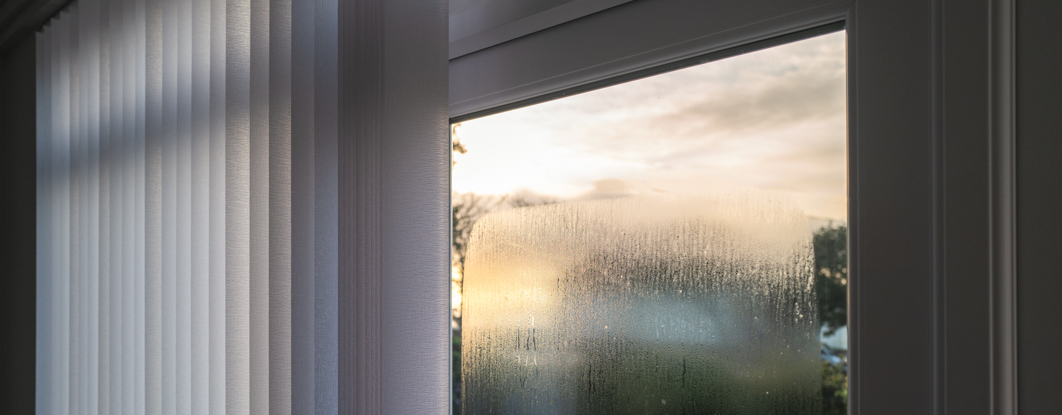Condensation
With our DRACO CLEAN 600 make your spaces comfortable and healthy.

Find out how to repair or completely get rid of damage caused by condensation in our solution below.
Condensation

Moisture is water vapor that is in the air along with other gases, and in residential areas it is one of the leading causes of impaired living comfort. In addition to aesthetic problems, there is a danger of health problems through the appearance of mold and fungi that can cause serious diseases by releasing spores into the air.
Mechanisms of condensation
Condensation is possible on all surfaces colder than the room air temperature, most often the walls. When, in conditions of high humidity, the warm air from the room comes into contact with the cold walls, the air cools down and the absolute humidity exceeds the maximum humidity values for the reduced air temperature. Then water vapor condenses on the cold surfaces of the walls.
This phenomenon of condensation is characteristic of unheated spaces that cool during the winter together with air and soil, and in addition to the occurrence of condensation caused by increased humidity in the interior, condensation is possible due to diffusion of water vapor through building materials. Diffusion is the process of transferring water vapor from a high partial pressure region to a low partial pressure region resulting in evaporation on the one hand and condensation on the other.
The area of high partial pressure is most often the inner space with a higher temperature, while the colder outdoor space is with the lower partial pressure of water vapor. In older, less insulated buildings, condensate is evenly absorbed into the materials and released over time, often without harmful consequences. If the diffusion of water vapor through the walls is prevented by placing a vapor-tight layer, moisture remains trapped in the structure and over a period of time, with an aesthetic and health problem, the structure degrades.
Although there are several mechanisms of condensation, they all have in common that they appear on a surface that is colder than the surrounding air. At air humidity higher than 80%, the air temperature in contact with the cold wall surface decreases below the dew point, and a condensation process occurs. The occurrence of condensation is often due to the existence of a thermal bridge. A thermal bridge is an area of envelope that has less resistance to heat transfer than other parts of a building, and there is a structural thermal bridge, created by using different types of materials or poor sealing of openings, and a geometric thermal bridge, created by changing the shape of the building.
Remediation of condensation problems
Remediation of the condensation problem is based on raising the temperature of the inner surface of the wall above the dew point temperature or lowering the humidity in the air. Lowering the humidity in the air is carried out by drying the air or ventilation. Raising the temperature by installing thermal insulation is the most efficient solution to the condensation problem.
Remediation begins with the removal of fungi and molds using the fungus, mold and algae remover DRACO CLEAN 600. DRACO CLEAN 600 does not contain chlorine or acids, and after spraying the areas where fungi and mold are located, it should be left to act for 24 hours. Prior to application of DRACO SHIELD 600, the surface should be cleaned of dead fungi and mold, and all loose parts should be removed and repaired. After preparing the surface, DRACO SHIELD 600 is diluted 10-15% with water and applied in two layers, and if the appearance of fungi and mold was pronounced, the third layer is applied with a material consumption of 100 g / m2. The temperature of the surface treated with DRACO SHIELD 600 becomes higher than the dew point temperature, which prevents the development of fungi and mold, and makes the space comfortable and healthier to stay.
The condensation phenomenon is a seasonal problem that occurs when the weather becomes very cold. Before cold winter days, make sure that your walls are well waterproofed and that your windows do not leak cold air or moisture.